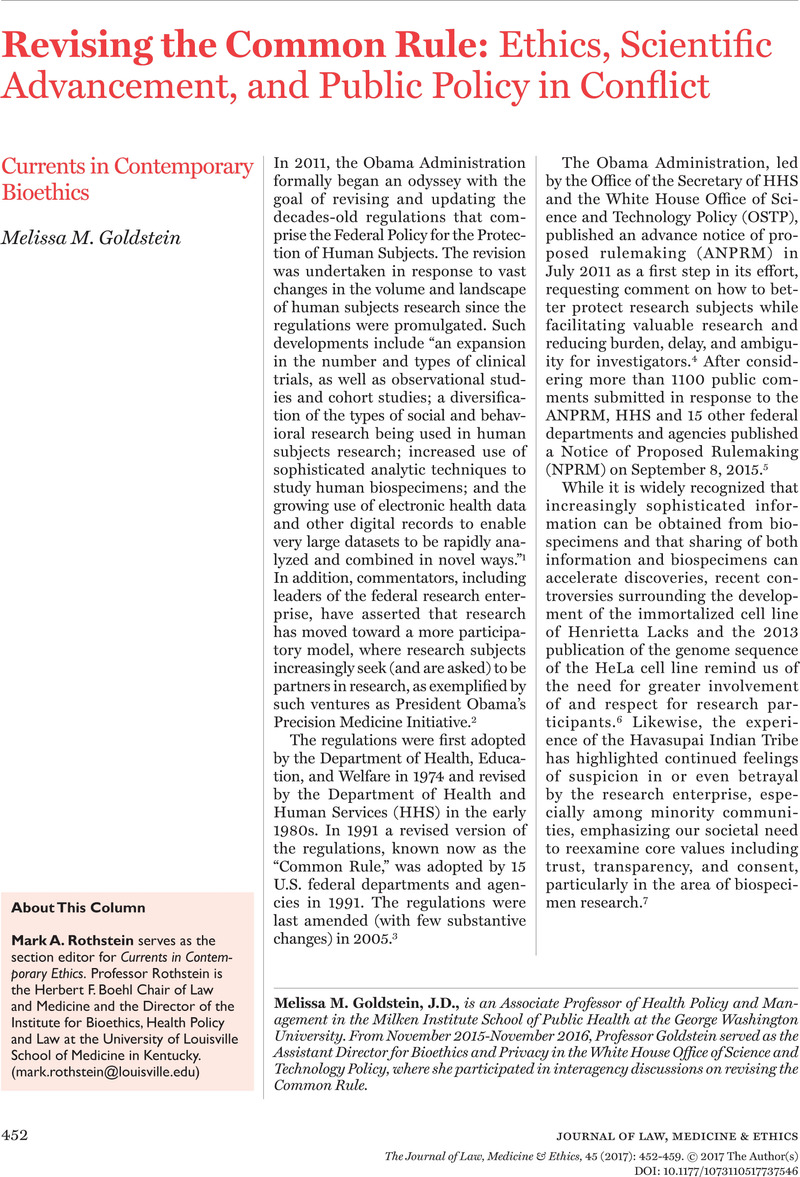The case of the Havasupai Tribe cinvolved researcher collection and testing of blood samples to study diabetes (with tribal council approval), with allegations that researchers also studied and published articles about schizophrenia, in-breeding, and migration of the tribe allegedly without the tribal members' knowledge or consent. The case illustrates issues of group-based harm based in linking individual members of a group with a stigmatizing condition as well as undermining a fundamental cultural belief system of the group. See, e.g.,
Rothstein, M. A.,
“Is Deidentification Sufficient to Protect Health Privacy in Research?” American Journal of Bio-ethics 10, no.
9 (
2010):
3-
11, at 6;
Wolf, L. E., “Advancing Research on Stored Biological Materials: Reconciling Law, Ethics, and Practice,”
Minnesota Journal of Law, Science, and Technology 11, no. 1 (2010): 99–156, at 118-122;
Rothstein, M. A., “Ethical Issues in Big Data Health Research,”
Journal of Law, Medicine & Ethics 43, no. 2 (2015): 425–429, at 426-427 (citing
Tilousi v. Arizona State Univ. Bd. of Regents, 2005 WL 6199562 (D. Ariz., March 3, 2005);
Drabiak-Syed, K., “Lessons from Havasupai Tribe v. Arizona State University Board of Regents: Recognizing Group, Cultural, and Dignitary Harms as Legitimate Risks Warranting Integration into Research Practice,”
Journal of Health & Biomedical Law 6, no. 2 (2010): 175–225);
Hurley, E. A., “From the Director: Informed Consent in the Revised Common Rule,”
available at <
http://blog.primr.org/ftd-informed-consent-revised-common-rule/> (last visited August 23, 2017).
CrossRefGoogle Scholar




